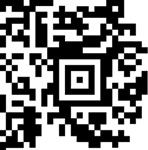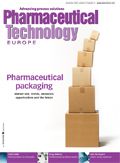Trends in labelling
Following years of development, DataMatrix codes are now a viable labelling solution for pharma manufacturers.
Pharmaceutical labelling is more complex than ever, with increasing pressure from consumers and regulatory bodies to prevent counterfeiting and improve safety. Manufacturers and packaging companies need to ensure products can be recognized and verified quickly and easily throughout the supply chain, communicating vital information to retailers and distributors.

Image supplied by Citizen Systems Europe
To achieve this, a more sophisticated labelling system than the European Article Number (EAN) barcode — the current retail labelling standard — is needed in the pharmaceutical sector. Although conventional barcodes have revolutionized labelling during the last 30 years, by today's standards they offer limited capacity for data handling in some applications; for example, with thousands of individual product packs carrying the same barcode, it is impossible to check if a barcode has been copied and used on counterfeit goods, or if products are destined for different markets. Furthermore, EAN barcodes provide no capacity for batch or shipmentspecific data.
Tougher guidelines
With ever more stringent guidelines being continuously introduced, these limitations need to be overcome. Most of the new guidelines from regulatory bodies leave it to manufacturers to decide for themselves how they are going to meet the standards. While this offers drug companies a degree of flexibility, it also presents them with the challenge of developing a system that works for them and is compatible with the organizations they do business with worldwide. The time and resources needed to address this problem also make it important that the chosen solution is flexible enough to justify a relatively high initial investment.

The author says...
A report by the FDA in 2004 included a number of widereaching guidelines for drugs manufacturers to help protect consumers from counterfeit products.1 These recommendations included stricter licensing requirements, tougher penalties, increased education and collaboration in the supply chain, and the use of new labelling technologies. While most manufacturers can see the benefits of implementing more effective labelling systems, however, many are unsure of how to continue. With sometimes conflicting information offered by the providers of competing systems, finding the right labelling solution can be difficult.
New labelling technologies
Today's drug manufacturers can choose from a wide selection of automatic identification and data capture (AIDC) technologies; these have been developed to enable detailed productspecific data to be stored on labels, identified and communicated around the world. Solutions range from printed barcodes to radio frequency identification (RFID) tags, but all essentially fulfil the same purpose: a smarter, more versatile way of storing and sharing data.
For instance, using AIDC technologies, manufacturers can include product or batchspecific data in individual product labels. In the pharma industry, this could enable suppliers and retailers to verify a product quickly and accurately — in most cases using standard technology. Just as importantly, additional data can be encoded in the product labels as they pass through the supply chain, providing detailed information on the journey a product has taken from manufacturer to consumer; therefore, considerably improving traceability.
Perhaps the most publicized, and controversial, of these new labelling technologies is RFID. RFID tags can be read without the need for close contact or a direct line of sight, and offer read/write functionality, which makes them ideal for tracking products and monitoring processes. However, many decisionmakers remain confused about the capability of RFID, and the relatively high cost and complexity of implementing the technology has prevented its progress in many areas, including the pharma industry. The issue of compatibility has also been a stumbling block as manufacturers are hesitant to label products with tags that other organizations throughout the supply chain may not have the technology or expertise to read or update.
2D barcodes
These issues have contributed to the growing popularity of the 2D barcode in pharmaceutical applications. The 2D barcode is a development on the now ubiquitous EAN (1D) barcode, offering a more sophisticated level of data handling, while being considerably cheaper and easier to implement than completely new technologies.
2D barcodes can hold considerably more information than standard barcodes (usually up to approximately 1000 characters of information on a single label, depending on the level of encryption) making them better suited to meet the requirements of today's manufacturers. This increased level of information can be held on a label the same size or smaller than a conventional barcode label, and the codes can, in most cases, be printed using the same technology, helping to minimize the cost of upgrading. Furthermore, as well as allowing product information to be accessible from a central database, 2D barcodes can also function as a database themselves, providing a portable information source on the labelled product.
Currently, there are two types of 2D barcode available: stacked and matrix. Stacked barcodes are essentially multiple rows of small standard barcodes stacked vertically above one another, which allows more information to be stored on a single label. Matrix barcodes, specifically 'DataMatrix' codes, have so far been more popular in the pharmaceutical sector, partly because of their ease of integration and compatibility. These matrix codes provide greater data capacity than the stacked type, and can usually be scanned vertically or horizontally to make them easy to read.
While DataMatrix codes work in a similar way to conventional barcodes, they look quite different. The codes comprise a pattern of black and white cells, typically in a square format. This makes them extremely spaceefficient and scaleable depending on the amount of information to be stored.
Following years of development, DataMatrix codes are now a viable labelling solution for pharma manufacturers. This is partly thanks to error detection and correction techniques that can be incorporated into the barcode to improve reliability and scan success rates; for example, data can be duplicated several times to provide backups if part of the label is damaged.
DataMatrix and the pharma industry
The new level of data management offered by DataMatrix brings a number of specific benefits to the pharma industry, including helping to prevent counterfeiting (and therefore protecting manufacturers' brands and reassuring consumers) and facilitating stock management.
The key to both of these important benefits is the capability of DataMatrix codes to store detailed productspecific and logistical data, such as global trade item numbers (GTINs), batch numbers and expiration dates. The GTIN is a globally recognized unique identification number allocated to an individual product. With the GTIN accessible from the product label, retailers and manufacturers can easily verify a drug at the point of use. This has many advantages; for example, by combining this information with the expiration date and batch number, the risk of outofdate products being sold and consumed can be minimized. Furthermore, where there is doubt regarding the authenticity or quality of a product, the manufacturer can prove to both regulatory bodies and consumers that they have a system in place to determine the validity of a drug or batch of products. This could potentially prevent legal action against the manufacturer and help avoid damaging press coverage.
Regarding the prevention of counterfeiting in the pharmaceutical sector, DataMatrix has some important benefits. As the codes allow labels to carry product or batchspecific information, it becomes much easier to spot cloned barcodes because no two genuine barcodes would be the same. As a result, labelling a counterfeit product for the retail market would be extremely difficult. Similarly, this more sophisticated level of data management makes it much easier to trace the route a product has taken from the manufacturer to the shelf, minimizing the potential for grey market imports. A product being sold in a market it was not intended for can quickly be recognized and necessary action can be taken.
One important result of this improved level of information is the ability to manage stock more effectively. With more detailed product data, manufacturers can make informed decisions about when and where to move products around the globe to maximize profits and cut waste. For example, drug companies can quickly and accurately check the integrity of any drugs returned to them unsold. Once they have verified that the products are safe, they can send the drugs to high demand markets to sell them before the products expire.
New technology stumbling block
While the benefits of the latest labelling symbologies are now widely recognized, the cost of implementing a new system has been a stumbling block in some cases. One of the advantages of using the 2D barcode system as opposed to a less familiar technology, such as RFID, is that the labels can generally be both produced and read using standard technology. Indeed, many manufacturers, distributors and retailers are already using 2D barcodecompatible equipment, making implementing the system considerably easier and more affordable.
Effective communication needed
Key to the benefits of the new generation of barcodes is the ability to capture and share information more effectively, but this can only be achieved if companies throughout the supply chain are using consistent labelling language. While the technology for manufacturers to produce the labels is already here, the difficult part is working together with suppliers and retailers to put a system in place for collecting the extra information and feeding it back to the manufacturer's systems. At present, there is no central organization managing this transfer of data globally, but this could be necessary to ensure a more secure, counterfeit-proof infrastructure can be created.
To try to standardize the format of the codes and aid compatibility throughout the supply chain, GS1, the global standards agency for supply chain technologies, has issued detailed guidelines on the format that DataMatrix codes should follow.2 The guidelines cover everything from the size of the 'quiet zone' (the blank space around the code) to printing methods, code dimensions and colours, and should be followed to ensure best practice is established.
In summary
The growing demand for more detailed and secure data management in the pharmaceutical sector to prevent counterfeiting and improve efficiency, has led to the development of a number of new labelling systems. DataMatrix, a type of 2D barcode is proving particularly popular, being relatively simple and affordable to implement in comparison with other, less familiar systems. However, the technology is just the beginning; effective lines of communication need to be established throughout the supply chain to allow information to be shared quickly and easily. Only then will tangible improvements be seen and the increasing demands of pharmaceutical companies, regulatory bodies and consumers be met.
To read an interview with Mark Beauchamp, where he discusses trends in the pharma industry, the impact on security choices and the future of printing and labelling technology, go to pharmtech.com/beauchamp
Mark Beauchamp is European Marketing Manager at Citizen Systems Europe, UK Tel. +44 208 893 1900 Fax +44 208 893 0080 mbeauchamp@citizen-europe.com
References
2. GS1, GS1 DataMatrix: An introduction and technical overview of the most advanced GS1 Application Identifiers compliant symbology (2009). www.gs1.org

Drug Solutions Podcast: A Closer Look at mRNA in Oncology and Vaccines
April 30th 2024In this episode fo the Drug Solutions Podcast, etherna’s vice-president of Technology and Innovation, Stefaan De Koker, discusses the merits and challenges of using mRNA as the foundation for therapeutics in oncology as well as for vaccines.